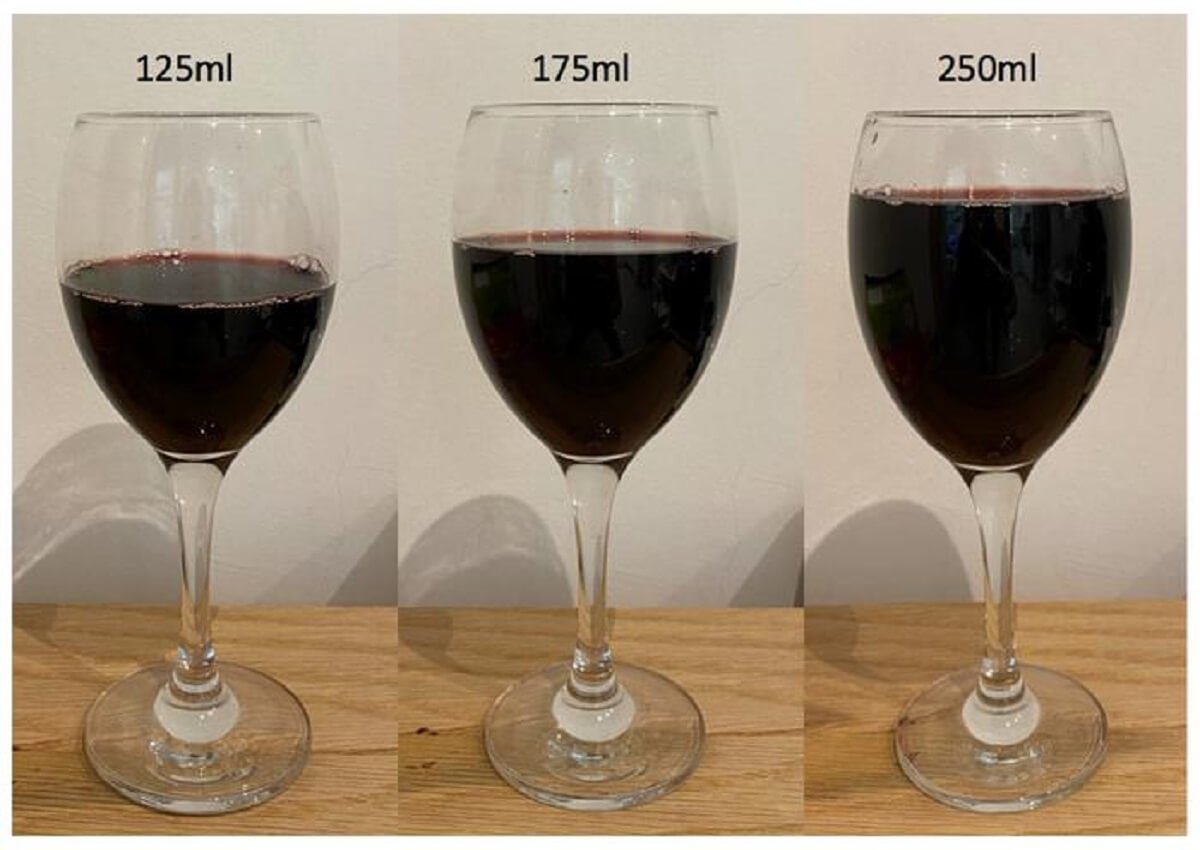🔑 Key Findings:
- Large wine glasses typically hold 250ml
- Removing them from bars and restaurants cut wine sales by 8%
- Taking large wine glasses away did not lead to people drinking more beer or alcohol
CAMBRIDGE, United Kingdom — Could the solution to ending problem drinking be smaller glasses? Eliminating the option of “large” wine glasses in pubs and restaurants could lead to a reduction in alcohol consumption, a new study explains.
Researchers from the University of Cambridge conducted a study involving 21 pubs and bars in the United Kingdom, where they removed the option of serving wine in large glasses, which hold 250ml or approximately a third of a bottle of wine. The focus on wine in this study stems from its popularity as the most consumed alcoholic beverage in the U.K. and Europe.
The findings show an average decrease of just under eight percent in wine sales at these establishments. Despite this reduction, the study finds that pub owners did not suffer financially, as smaller glasses typically have higher profit margins.
Interestingly, the study finds no increase in beer or cider sales during this period, indicating that people did not compensate for their decreased wine consumption by drinking more of other alcoholic beverages.
While the eight percent reduction in wine sales is modest, the study suggests that removing the largest serving size could be an effective strategy for encouraging customers to drink less alcohol. This approach could contribute to better public health, considering that alcohol consumption is a major factor in premature death and disease globally. In 2016, alcohol consumption was estimated to have caused around three million deaths worldwide.

“It looks like when the largest serving size of wine by the glass was unavailable, people shifted towards the smaller options, but didn’t then drink the equivalent amount of wine,” says first author Dr. Eleni Mantzari, from the University of Cambridge, in a media release. “People tend to consume a specific number of ‘units’ – in this case glasses – regardless of portion size. So, someone might decide at the outset they’ll limit themselves to a couple of glasses of wine, and with less alcohol in each glass they drink less overall.”
Numerous factors influence drinking habits, including advertising, labeling, availability, and cost. Public preference often leans toward information-based interventions, such as health warning labels, rather than reductions in serving or package sizes. However, in this study, only four of the 21 participating premises reported customer complaints.
“Removing the largest serving size of wine by the glass in 21 licensed premises reduced the volume of wine sold, in keeping with the wealth of research showing smaller serving sizes reduce how much we eat,” adds the senior author of the study, Professor Dame Theresa Marteau, in a media release. “This could become a novel intervention to improve population health by reducing how much we drink.”
The University of Cambridge team observes that while pub and bar managers might accept such changes, especially given no evidence of revenue loss, the broader alcohol industry may resist policies that could decrease sales of targeted drinks.
The research is published in the journal PLOS Medicine.
South West News Service writer Imogen Howse contributed to this report.

Just made up the part about more people deciding to give up caffeine altogether with absolutely no evidence. A standard cheap journo trick when writing these types of stories.